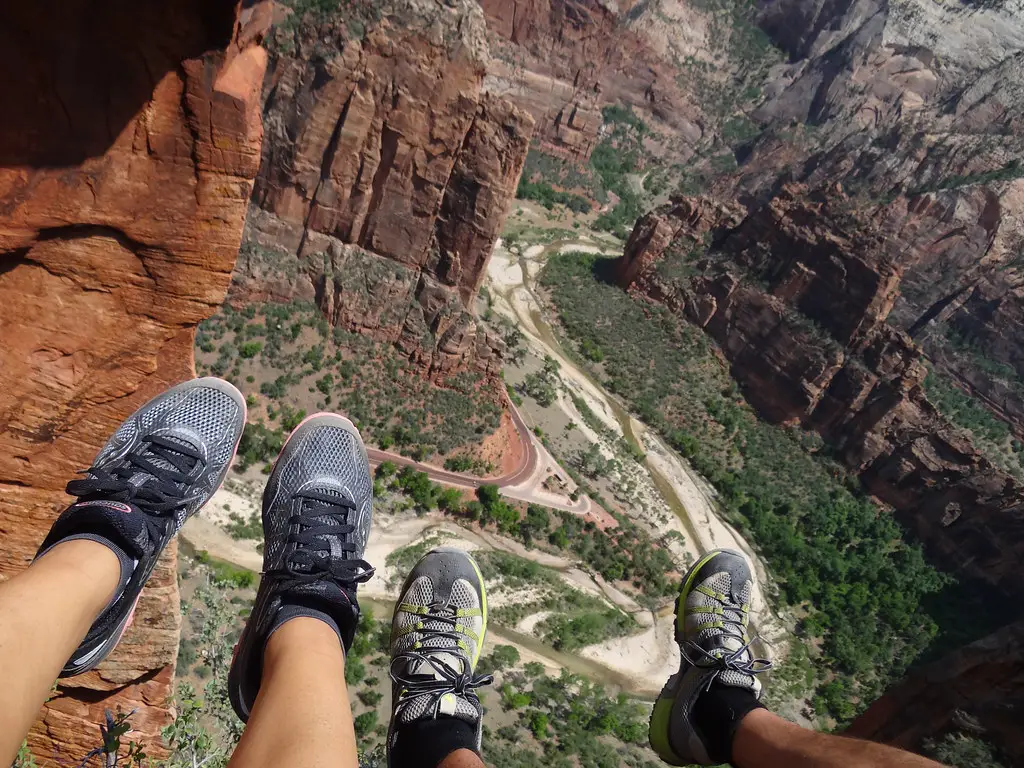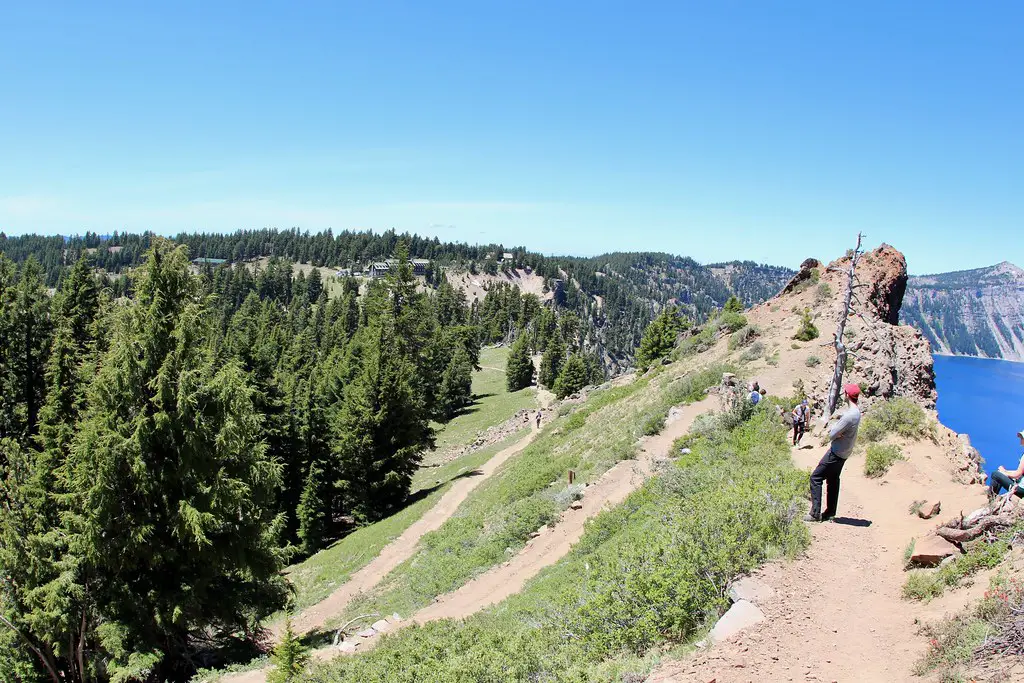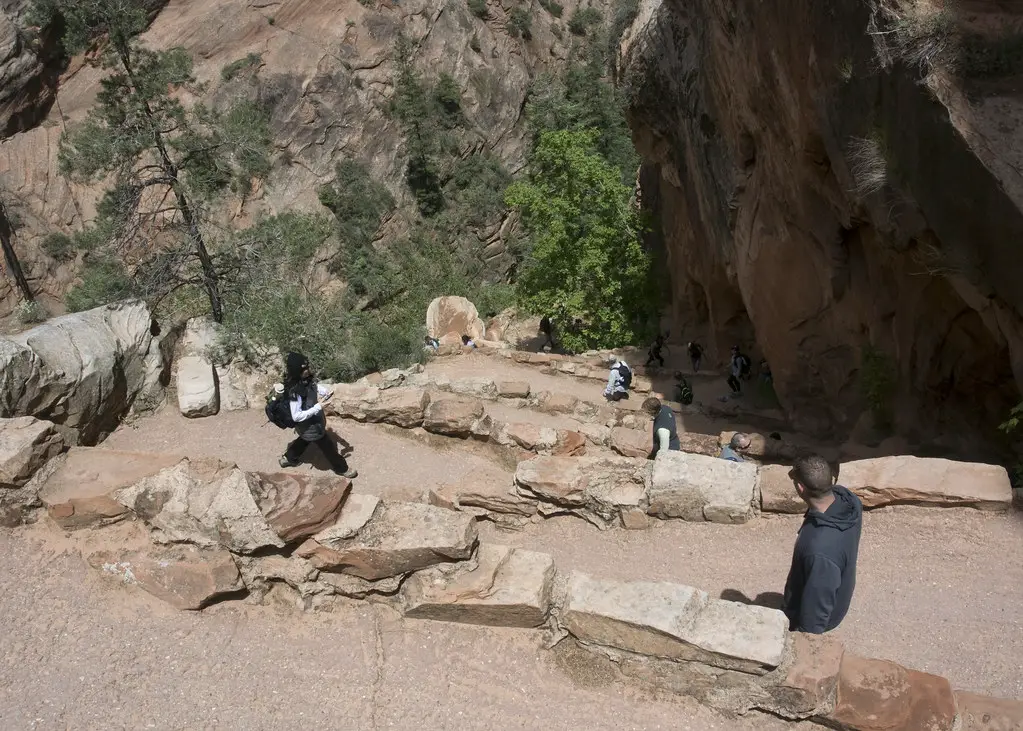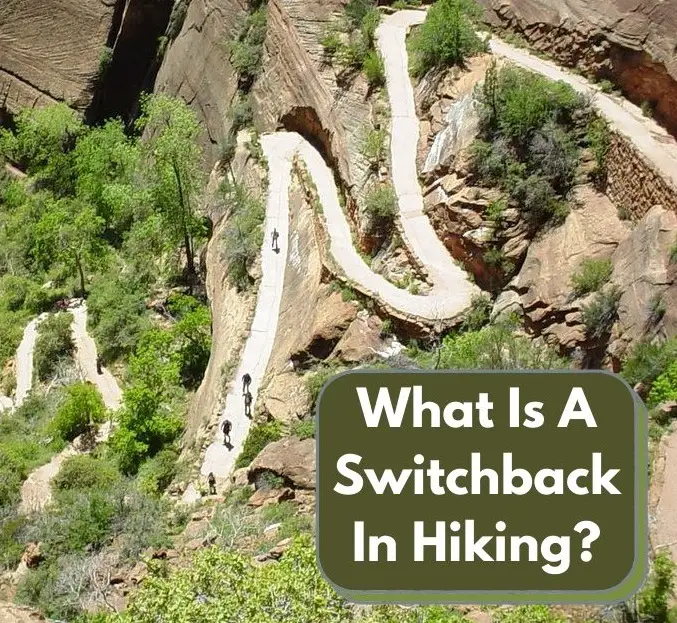What is a switchback in hiking? A switchback is a path that follows a zig-zag pattern up a steep terrain such as a hillside or mountainside. Rather than going directly up the slope, switchbacks run back and forth in opposite directions, switching back and continuing until the summit is reached.
Switchbacks are found on trails, roads, and all kinds of terrain, and it’s important to know how to navigate switchbacks when hiking.

What Is A Switchback In Hiking?
A switchback in hiking is simply a path that follows a zig-zagging pattern up steep terrain.
Switchbacks allow for steep slopes to be traversed more safely and using less exertion than going straight up.
In fact, some slopes are so steep that it wouldn’t be possible to ascend them without the use of a switchback.

Tips For Hiking On Switchbacks
Ultimately, hiking switchbacks is not all that different than hiking a typical trail, but there are a few things to pay attention to.
Pace Yourself When Hiking Switchbacks
Although switchbacks save hikers the effort and energy expense of hiking straight up steep inclines, they do it by covering far more distance over the length of the hike.
As such, you should take your time and be in no rush – enjoy the scenery as you hike up the switchback, taking in the changes in scenery as the elevation increases.
Have A Clear Expectation Of The Trail Ahead
Although the purpose of a switchback is to reduce the steepness of the hike, switchbacks themselves can still be quite steep.
In addition, switchbacks are typically narrower than most hiking trails and may have unguarded edges, so you really need to watch out for yourself and others.
To that point, it’s important to follow switchback etiquette while hiking them, which we’ll cover below.
Keep An Eye Out For Trail Markers While Hiking On Switchbacks
Switchbacks aren’t hiked as often as typical trails, which means that you’ll need to keep an eye out for trail markers such as reflectors, signs, or flags to ensure you’re traveling in the right direction.
Expect To Hike Uneven Terrain On Switchbacks
A hiking switchback will ideally be slightly-sloping and even terrain, but often times it will be uneven and have plenty of roots and/or rocks.
Be sure to mind the trail and look before you step!
Wear Proper Footwear For Switchback Hiking
Because switchbacks have lots of angled and uneven terrain, it’s important to make sure that you wear a well-fitting pair of hiking boots that offer plenty of ankle support and have good-gripping soles with a lug pattern on them to ensure solid footing.
For more info on these topics, check out our guide to how hiking boots should fit, our picks of the best men’s hiking boots for under $100 and the best women’s hiking boots for under $100.
Never Take Shortcuts When Hiking On Switchbacks
Trail etiquette (and common sense) dictate that you should always stick to the common trail while hiking.
This is particularly important when switchback hiking because cutting can contribute to erosion, destroy vegetation, and can even get you injured.
Stay Hydrated While Hiking Switchbacks
Because switchbacks take longer to hike than direct paths, you’ll want to make sure you bring adequate supplies of water.
Depending on the length of your hike you may need to consider bringing a hydration bladder or other source that has a larger fluid capacity than your standard water bottle.
Check out our rundown on the best way to carry water while hiking for some great options.
Take Standing Breaks On Switchbacks
While you should certainly take plenty of breaks, you don’t want to spend them sitting down while on a switchback.
Your heart rate needs to stay at roughly the same rate as you hike, and sitting down will slow it to a resting rate.
Instead, choose only to stop long enough to catch your breath, or walk around a little bit during your break rather than sitting.
Minimize Your Load
Although this applies to pretty much any hike, it’s particularly important on switchbacks.
You need to plan ahead to properly balance your food and hydration needs while eliminating non-essentials, because every extra unnecessary ounce in your backpack will sap your energy over the long hikes that switchbacks demand.
Make Sure You’re Physically Prepared To Hike Switchbacks
Hiking in general is a demanding sport and this is especially true for hiking switchbacks.
As such, it’s important that your body is physically ready for the task.
There are plenty of exercises to give you explosive power for hiking uphill as well as ways to prepare your feet for hiking and strengthen your knees for hiking that we’ve covered.
Give those guides a look and incorporate those exercises into your routine to make sure you’re well prepared.

Popular Switchback Hiking Trails
Hiking switchbacks can be a really fun and rewarding experience, and many trails that feature switchbacks have gained popularity with hikers.
Here are a few of the more popular hiking trails featuring switchbacks:
Popular Switchback Hiking Trails In The U.S.
-Deer Mountain (Tongass National Forest, Alaska)
-Mount Whitney (Sierra Nevada, California)
-Half Dome (Yosemite National Park, California)
-Precipice Trail (Acadia National Park, Maine)
-Wheeler Peak (Sangre de Cristo Mountains, New Mexico)
-Gregory Bald (Great Smoky Mountains National Park, Tennessee)
-Mount LeConte (Great Smoky Mountains National Park, Tennessee)
Popular Switchback Hiking Trails Across The World
-Oberfelben (Austria)
-Col de Chaussy (France)
-St. Gotthard Pass (France)
-Passo San Boldo (Italy)
-Lysefjorden Road (Norway)
-Transfagarasean Pass (Romania)

Switchback Hiking Etiquette
There are a few pieces of general hiking etiquette and switchback hiking etiquette you should pay attention to in order to ensure a more pleasurable and safe hiking experience:
Yield To Uphill Switchback Hikers
If the trail is tight, be patient and let uphill hikers pass – they have the harder job after all.
Don’t Rest On The Trail
Get out of the way and don’t rest in the middle of the trail, especially on a narrow trail or switchback.
Move as close to you can to the side and out of the way to allow other hikers to get through.
Let Single Hikers Pass On Switchbacks
This applies to regular trails too. If you’re in a group, try to hike single file or at least move to the side to let a single hiker pass your group.
Be Friendly And Helpful To Other Hikers
It’s always better when everyone’s friendly with each other, and this rule applies exponentially to hiking.
Say hello to your fellow hikers, or be courteous to warn them about trail conditions up ahead if you’ve been there before or are heading in the opposite direction.
They’ll do the same for you.
Switchbacks Hiking FAQ
A switchback is a path that follows a zig-zag pattern up a steep terrain such as a hillside or mountainside.
Rather than going directly up the slope, switchbacks run back and forth in opposite directions, switching back and continuing until the summit is reached.
Switchbacks make hiking steep inclines easier by decreasing the slope at which you need to hike.
They are also used to prevent soil erosion on slopes which helps protect natural areas.
The practice of “cutting” a switchback just means taking a shortcut by walking directly up the slope, bypassing the zig-zag trail.
This is against trail etiquette, unsafe, and can be damaging to the environment- so don’t do it.

